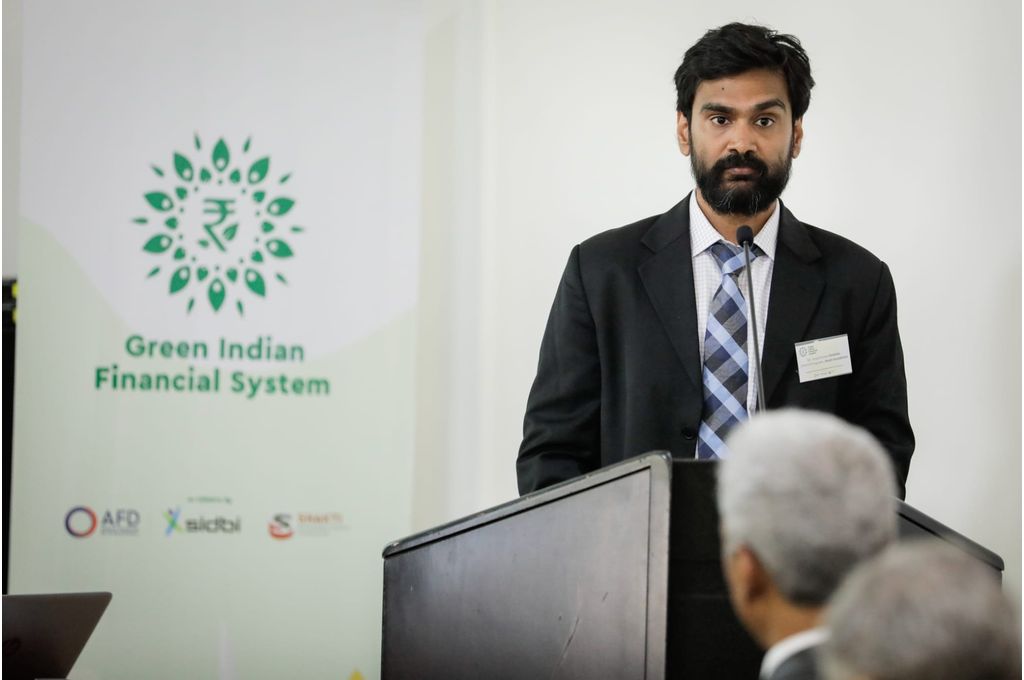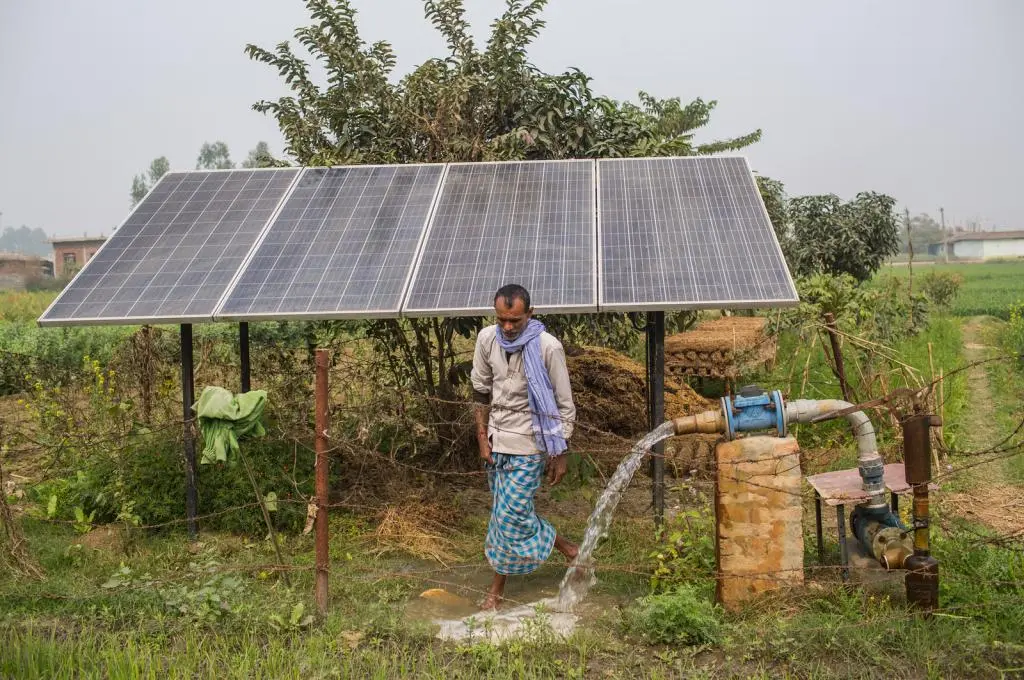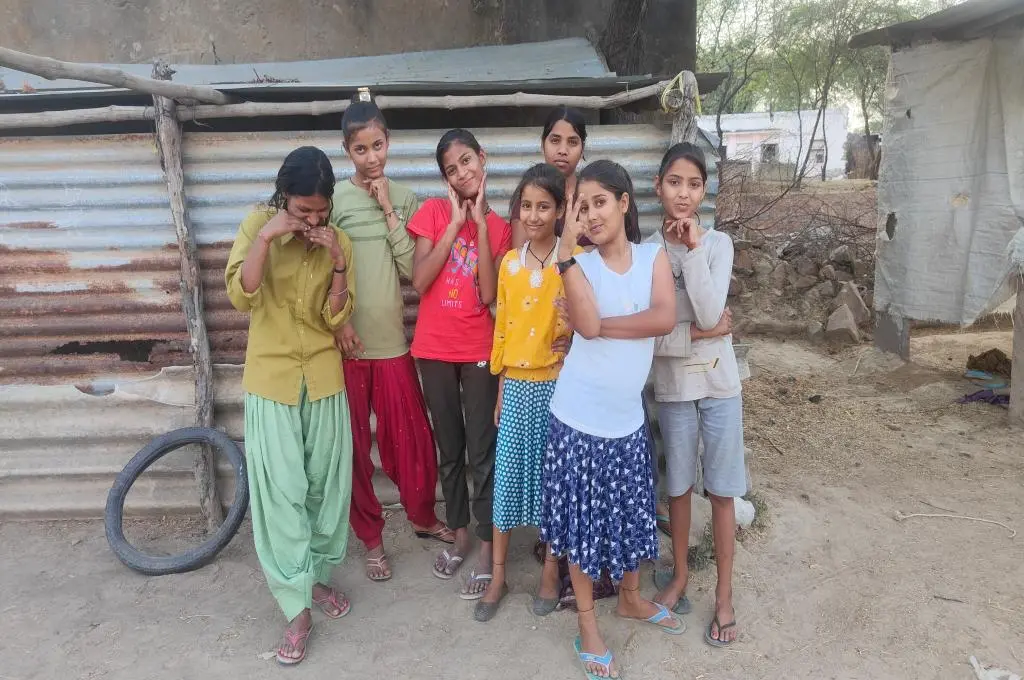Koyel Kumar Mandal works as Chief of Programmes at Shakti Sustainable Energy Foundation and provides strategic leadership and guidance across all program areas. Koyel brings to this position experience in climate policy, climate finance, and international cooperation. He has worked with organizations such as Ocean Conservancy, Institute for Financial Management and Research and GIZ. Prior to joining Shakti, he led the policy team at the G20 Saudi Arabia Secretariat. Koyel holds a MS in Environmental Science and Policy from the University of Wisconsin, USA, an MBA from IIFM, India and a BSc in Economics from St. Xavier’s College, India.
In this interview with IDR, Koyel speaks about the current state of the climate emergency space in India, where the gaps are, and the crucial role that civil society organisations must play to ensure the government, the producers, and the consumers are all working towards India’s net-zero commitments.

What is the role that civil society organisations (CSOs) are playing to advance climate action in India?
CSOs have played a critical role in generating research and evidence as well as in advocating for the need for climate action in India over the last decade.
However, since Prime Minister Narendra Modi’s global commitment at COP 26 to cut India’s carbon emissions in order to achieve net-zero status by 2070, there has been a visible shift in the climate action landscape. There is now an urgent need to move towards delivery and integration of climate action policy across sectors such as transport, power, food systems, and industry. In some ways, this demands a transformation of the whole economy. Government institutions at the central, state, and city levels are all seeking support to operationalise the prime minister’s commitments because, given the complexity of the challenge, there isn’t adequate understanding of climate action planning and implementation in the ecosystem.
At Shakti, too, we are seeing a lot of demand directly from policymakers and government bodies for such support, which we didn’t see earlier. There’s a lot of work to be done, and one of the challenges is that India only has a limited number of climate-oriented CSOs, most of which work at the national level. The country needs more organisations that can support climate planning and implementation at the subnational level because that’s where the action lies. One way to address this lack of capacity is to incubate new organisations that can work in climate action. But this may not be enough to cater to the nature of work that is required currently.
Looking at the larger civil society ecosystem, there are approximately 22,000 FCRA-registered organisations working on various socio-economic issues. And even though their work may not directly fall into the ambit of climate action in India, there is potential for them to apply a climate change lens to their existing programmes. For example, there’s a huge network of CSOs that work on climate-adjacent sectors such as industrial competitiveness, water, land, forestry, and agriculture. But organisations working on agriculture, for instance, are largely focused on issues of nutritional security, improving agricultural productivity, water security and to an extent, climate adaptation. However, they aren’t directly integrating climate mitigation into their programmes, though agriculture and food systems contribute to greenhouse gas emissions. They can be a key ally in achieving our commitment to net-zero emissions. This is why it’s becoming increasingly important to bring in a climate change lens to the work that such organisations do.
How do you see this happening? How can CSOs adopt a climate change lens to their existing work?
It is essential for CSOs to understand the interlinkages between their work and climate change. At the end of the day, the same land that provides food, water, and biodiversity will also provide space for solar panels and wind generators.

However, before we get to the how, we need to understand why it is important to apply a climate change lens. The first step would be to help CSOs realise why they should invest resources in building capacity for climate action. For instance, an organisation working on agriculture may focus on improving nutritional security for local communities; however, their work may not be informed by an understanding of how agriculture and food systems contribute to greenhouse gas emissions and are impacted by climate change. This could lead to programmes that promote agricultural practices that are counterproductive for climate-oriented development in the long run.
Bringing in this focus requires building capacities at many different levels, including strengthening technical know-how. This includes understanding emissions and their sources in order to model future pathways, identifying different levers to help reduce emissions, and simultaneously improving people’s resilience.
One way to build this capacity is through programmatic grants. These work well for organisations that are already established and have an understanding of their specific sector, the ecosystem, and the bureaucracy and political economy of the state in which they operate. However, they may not have expertise in, say, industrial decarbonisation. Therefore, a climate action programme–based grant that is tied to certain outcomes and deliverables can help build institutional capacity.
For entirely new organisations that are being incubated to work on climate change, flexible grants, i.e., grants that are not tied to specific activities or deliverables, are important. This is key when building institutional capacity in new organisations. At Shakti, for example, we support newer institutions by providing flexible grants that help them develop leadership and systems and processes in the first few years.
In addition to grants, it also helps to provide support through mature organisations that have already worked in this domain and gone through the journey of growth. The climate change space can be daunting because of the need for scientific know-how and capacity, which is why knowledge sharing and collaboration are key to bringing in more organisations to the fold. This is where the power of the civil society network comes in.
At Shakti, while incubating a new CSO, or incubating capacity in an existing CSO, we often pair them up with a seasoned climate change organisation so that they get hands-on experience and the opportunity to work on a live project. This creates a better understanding of how different climate change verticals such as the electric mobility space or renewable energy space work.
However, climate action requires all hands on deck; the work can’t happen with CSOs alone. If we want to transition to environmentally friendly technologies and pathways, all actors in the climate action space such as civil society, the government, the producers, and consumers themselves must understand why it is important to make this paradigm shift to low-carbon pathways. Focusing on developing a strong narrative that underlines the importance of climate friendly policies and actions is critical to mobilise all stakeholders.
What does this communication with other stakeholders look like? And what role do CSOs play?
Once we’ve built the capacity of CSOs at the subnational level, it becomes easier to extend this narrative to other actors through them.
Let’s continue with the example of agriculture and food systems. In this context, farmers are responding to demand, that is, to consumers’ food choices. For example, in India, we predominantly consume two or three staples, one of which is rice. However, rice cultivation by itself contributes to around 12 to 14 percent of the methane emissions within the agriculture sector. That’s a big lever for decarbonisation.
So, at one level, communication needs to be directed at consumers—to inform them about the climate impact of their food choices. Their choices in turn influence the market.
Next, we consider communication to the producer, which in this case are farmers. This is a tricky area; needless to say one can’t view agriculture and food systems purely from a climate mitigation lens. There’s a huge population of small and marginal farmers that depend on agriculture for their livelihoods, and, as we all know, these farmers take high risks. When you add the impact of climate variability, change in precipitation, and temperatures to the equation, agriculture becomes riskier than it already is. Therefore, whatever transition we advocate for, we also have to ensure that it is beneficial for farmers in terms of increasing their productivity and income.
Most government programmes encourage tilling lands and excessive fertiliser usage.
When CSOs engage with farmers and farmer producer organisations, the narrative must focus on how adopting climate friendly production practices can also lead to profitability by lowering input cost in terms of water, fertiliser usage, and so on. Moreover, it should also communicate that in the long run, these practices are not only better for the environment but also for land and soil health. For example, no till farming is beneficial not just for crop productivity and soil health, but also because it helps the soil capture carbon and can therefore aid in reducing emissions.
Most government programmes, however, encourage tilling lands and excessive fertiliser usage. They also provide a large number of disincentives—such as fertiliser subsidies—that work counter to our narrative of climate transition. So how do we bring in this aspect of climate friendly practices into government training modules? How do we build the climate change narrative within the political community? So, I think that’s a level at which strategic communication is equally important. And this is why we need a large network of CSOs at subnational levels, veering everyone on the path to net-zero.
What are some of the other gaps that need to be addressed in the climate action space?
If we take a step back and look at the larger issue of institutional capacity building, the government is a huge driver of this change in many aspects. However, there’s limited capability even within government systems to deliver on climate action because India is experimenting with an entirely new form of growth. Countries in the Global North developed first and are only decarbonising now. However, for India and many other developing nations, it’s a new developmental paradigm—we’re decarbonising as we grow.
Therefore, capabilities within government also need to be built. CSOs working in the climate action space are already doing this by delivering training programmes for government officials and by supporting government departments with data and research.
Governments themselves are introducing certain initiatives to address capacity gaps. For example, Tamil Nadu has launched the Chief Minister’s Green Fellowship programme, under which each district is allocated a fellow who will inform policymaking on environmental issues.
When it comes to investments for the transition, of course, the requirement is massive. According to some of the modelling studies that we have supported at Shakti, if we look at the years counting up to 2050, the additional capital expenditure for new technology deployment to achieve net-zero can amount to USD 5.6 trillion. This will be over and above the investments we would have made if we were to continue with our current set of policies (also known as a business-as-usual scenario). For example, to achieve India’s commitment to install 500GW of non-fossil electricity capacity by 2030, we will require an additional cumulative investment of approximately USD 290 billion (including generation, transmission, and battery storage). Triggering these investments would require policy research and technical assistance, which would require additionally philanthropic funding.
Private capital is critical to mobilise some of this because these are investments that will ultimately pay off and help citizens lead a better life in terms of air quality and health improvements, as well as reduce our climate risks and climate vulnerability in the long term. According to this compendium published by the Observer Research Foundation, implementation of climate policies for the net-zero transition will yield significant health co-benefits, preventing 9.9 million premature deaths due to air pollution from 2020 to 2050. The estimated monetary value of avoided premature deaths and avoided climate damages amounts to USD 8,789 billion cumulatively over this 30-year period.
However, public funding is equally necessary to de-risk a lot of these private sector investments. In addition to domestic public capital, international public capital available through multilateral development banks like International Monetary Fund and World Bank can ensure all of this is achievable at the scale required.
More public funding is required as there isn’t sufficient private money coming into adaptation and resilience.
These funds, however, are largely focused on reducing carbon emissions, which we call climate mitigation. Climate adaptation has its own requirements, which often get neglected in the climate discourse and negotiations. This is because of the nature of our economic accounting systems, wherein private investors may not see any returns as such on investments on adaptation and resilience plans. Therefore, as of now, more public funding is required as there isn’t sufficient private money coming into adaptation and resilience.
India also has a huge network of academic institutions, many of whom receive funding from the central government to build climate capacity. But often these institutions are not well equipped to engage with policymakers and provide the kind of support that is needed. Most academic institutions focus on research. However, even though they sit on vast troves of data, they might not know how to translate their research into actionable policy insights and recommendations.
Additionally, if we look at the nature of the curricula of academic institutions across the country, many of them don’t focus on integrating climate change within their modules. The numerous technological and management schools in India don’t explicitly mention climate change in their core curriculums. Given the centrality of the issue, climate change needs to feature as a core part of curricula across educational institutions and not just be limited to the dedicated environmental streams. This is important if we are to build capacity for long-term climate-oriented thinking across the economy.
And, lastly, we need to take advantage of this new-age virtual world that allows us to connect with specialists and scientists sitting across the globe. We must create a larger, global community and leverage technology to use this worldwide network to action some of this.
The views of the author are personal and do not necessarily reflect the views of Shakti Sustainable Energy Foundation.
—
Know more
- Learn more about the Clean Energy Lab, India’s first incubation programme for early-stage civil society organisations.
- Read this article to learn more about what India needs to do to achieve net-zero status by 2070.
- Learn more about climate governance for low-carbon development in India here.







